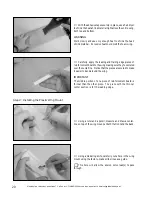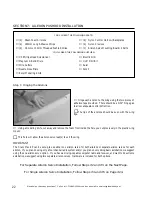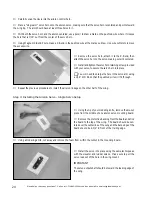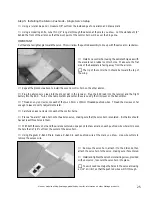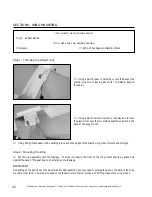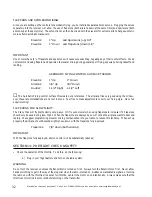
32
Need help or have any questions? Call us at 1-714-963-0329 or send us an email to service@globalhobby.net
FLAPERON AND SPOILERON MIXING:
Since you are setting up the controls for aerobatic flying, you've installed separate aileron servos. Plugging the servos
separately into the receiver will allow the use of flaperons (both ailerons down at the same time) and spoilerons (both
ailerons up at the same time). These functions can then be mixed with the elevator for extreme pitch changes useful in
more extreme aerobatic maneuvers.
Elevator:
1" Up
and Spoilerons (up) 1/4"
Elevator:
1" Down
and Flaperons (down) 1/4"
IMPORTANT
Use of more than 1/4" of flaperons and spoilerons will cause excessive drag, negating any of their useful effects. We do
not recommend using flaperon and spoileron to elevator mixing during general sport flying, especially during takeoff and
landing.
AEROBATIC FLYING CONTROL SURFACE THROWS
Elevator:
1" Up
1" Down
Ailerons:
3/4" Up
3/4" Down
Rudder:
1-1/2" Right
1-1/2" Left
☛
The Aerobatic Flying control surface throws are our preferences. The airplane flies very good using them; how-
ever, these recommendations are not set in stone. Feel free to make adjustments to suit your flying style. Have fun
experimenting!
FLAPERONS FOR SLOW FLIGHT:
The Crazy Max will fly pretty slowly set up as-is. It'll fly even slower when using flaperons to increase lift. Flaperons
should only be used during slow flight. When the flaperons are deployed you will notice the airplane wants to descend
rapidly. We suggest programming elevator mixing compensation into your radio to reduce this tendency. When set up
properly the airplane should descend slightly nose-down with the flaperons fully deployed.
Flaperons:
7/8" down (both ailerons)
IMPORTANT
With the flaperons fully deployed, aileron control will be substantially reduced.
SECTION 14: PREFLIGHT CHECK & SAFETY
●
Check the operation of the throttle. To do this, do the following:
A) Plug in your flight battery and turn on the radio system.
WARNING
Do not turn the receiver on unless the transmitter is turned on first. Always turn the transmitter on first. Never allow
hands or clothing to get in the way of the propeller when the radio is turned on. Sudden unwanted radio signals, or turning
the radio on with the throttle stick set at full throttle, can turn the motor on unintentionally. Always make sure that the
throttle control stick is set to idle before turning on the transmitter.



